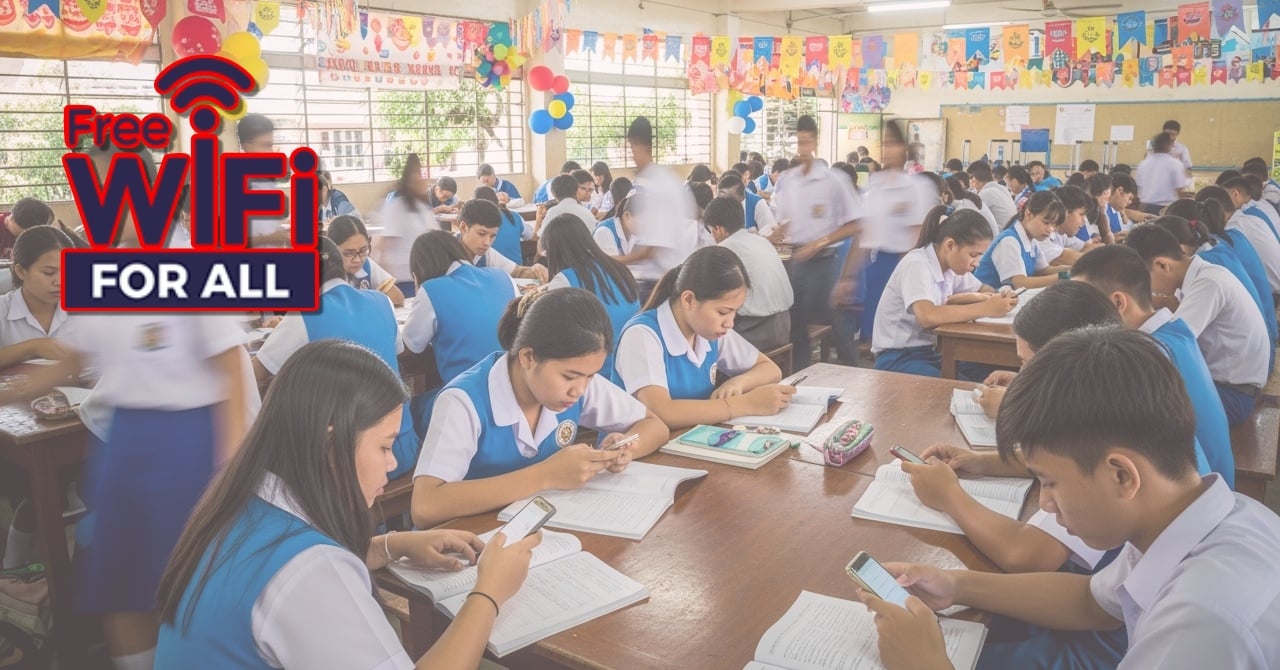Imagine stepping into a remote mountain school or your local barangay plaza and instantly tapping into the digital world — no wallet needed. This is what the Department of Information and Communications Technology (DICT) has been working on for several years now.
That said, the Free Wi-Fi for All Program is already live in thousands of spots across our archipelago, but just how big a slice of our schools, health centers, and community hubs are truly online?
The answer might surprise you — and it will show exactly how much farther we can go.

Program Overview
The Free Wi-Fi for All Program is a flagship initiative of the Department of Information and Communications Technology (DICT) aimed at bridging the digital divide across the Philippines. Enshrined in the Free Internet Access in Public Places Act (RA 10929), it provides free internet access in public venues—especially geographically isolated and disadvantaged areas (GIDAs)—to spur digital inclusion and support the burgeoning digital economy.
Implementation Timeline & Coverage
- 2016: Program rollout began, initially focusing on pilot sites in urban centers.
- 2021: Launch of 142 new sites in 48 locations within Sorsogon and interagency connectivity at the Estrella–Pantaleon Bridge.
- 2021–2023: Through the Universal Internet Subscription for GIDAs (UISG) project, over 3,914 new access points were installed and activated nationwide by October 2023.
Current Footprint and Targets
| Year | Sites (Actual/Target) | Budget Allocation |
| End of 2023 | 3,914 new APs | — |
| 2024 (current) | 13,462 live access points | ₱3.6 billion (maintains until Feb 2025) |
| End of 2025 | 30,000 target sites | ₱2.5 billion (sustains 5 months) |
| End of 2026 | 60,000–70,000 projected | TBD |
Funding & Sustainability Challenges
The DICT’s proposed ₱7.8 billion 2025 budget allocates ₱2.5 billion to the Free Wi-Fi program, enough to run its 13,462 sites for only five months. Without additional funding—primarily from the Free Public Internet Access Fund sourced from NTC spectrum fees and other DBM-identified revenues—the program risks intermittent service and mounting unpaid dues to telcos.
Expansion Strategy
To meet the 30,000-site target by end-2025, the DICT plans to:
- Prioritize internet connectivity in over 12,000 public schools still offline, in line with the President’s directive to bridge the education digital divide.
- Roll out free Wi-Fi to 10,000–12,000 health centers and hospitals.
- Equip 50,000 barangay halls with access starting 2026.
- Fast-track the National Fiber Backbone’s completion (now targeted for 2026) to boost deployment capacity.
Operational Model & Partnerships
Implementation relies on public–private partnerships with local government units and telecommunications providers. Service maintenance and bandwidth subscriptions are funded through the Free Public Internet Access Fund (FPIAF), managed by the DICT and financed by spectrum user fees and other government sources.
Program Revamp & Cost-Effectiveness
Facing tight budgets, the DICT announced in March 2025 a reevaluation of the program’s approach. Plans include optimizing procurement, exploring lower-cost technologies (e.g., community mesh networks), and renegotiating service contracts to stretch resources without sacrificing coverage.
Impact & Recognition
Since rollout, the program has received both local and international praise for advancing digital inclusion. It has enhanced access to online government services, enabled remote learning during the pandemic, and supported e-commerce in rural areas. Continued expansion promises to further empower underserved communities and drive socioeconomic growth.
Frequently Asked Questions
- Who can use the service?
Anyone within the coverage area can access the free Wi-Fi. Typical locations include public schools, health centers, barangay halls, government offices, transport terminals, and public plazas.
- What areas are prioritized for new installations?
Priority is given to public schools still offline, health centers and hospitals, barangay halls, and other public venues in underserved municipalities.
- How is the program funded?
Funding comes primarily from the Free Public Internet Access Fund, which is sourced from National Telecommunications Commission spectrum user fees and other government revenues. The DICT also seeks congressional budget allocations to sustain operations.
- How long will the service last at each site?
The current budget allocation covers maintenance and bandwidth for approximately five months of 2025. Additional funding or alternative cost-efficient solutions will be needed for continuous service.
- Who maintains the network and handles issues?
Maintenance and troubleshooting are managed through public–private partnerships with telcos and local government units. Users can report connectivity problems to their barangay ICT officer or through DICT’s online helpdesk.
Watch: Free WiFi Reaches Butuan Airport—DICT Connects More Filipinos
Henry Aguda visited Butuan Airport and instantly tapped into DICT’s Free WiFi For All program.
The connection delivered fast speeds, showing how public spaces are becoming more digitally accessible.
DICT continues to expand coverage in remote areas, helping more Filipinos stay connected for work, school, and emergencies.
This move supports everyday needs and opens new doors for communities that once had limited access.
With each new site, DICT strengthens the country’s digital backbone—one signal at a time.
Conclusion
The Free Wi-Fi for All Program exemplifies the Philippines’ commitment to digital inclusion and equitable access. By steadily increasing coverage to remote schools, health centers, and community hubs, it empowers citizens to pursue education, access government services, and engage in economic opportunities. Continued investment, efficient procurement strategies, and strong partnerships will be essential to sustain and expand this vital public service, ensuring that the promise of a connected Philippines becomes a reality for every community.
